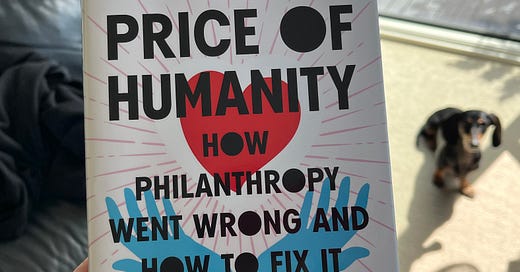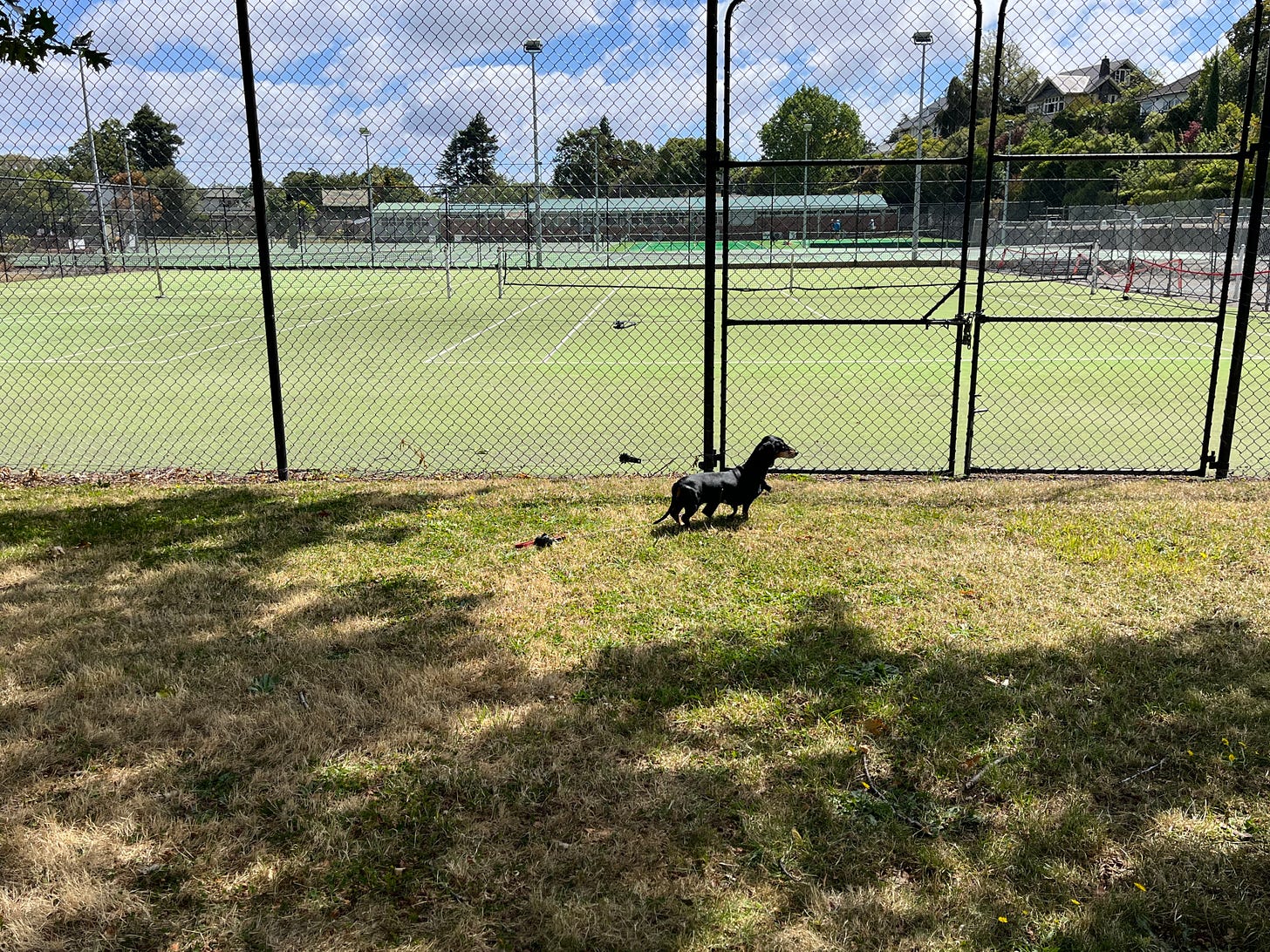Update for all subscribers: to ease pressure on your inboxes and on my health situation, Symphonia’s posts are now fortnightly, and none of them are paywalled. As part of the Symphonia reader community you are also now enthusiastically encouraged to common on posts (previously the domain of paid subscribers) and share any dots a Symphonia dot connected to in your head.
(I reserve the right to issue bonus posts sometimes in the fallow weeks if I can’t keep my pants on about something.)
I had a whole post all written in my head about what trees do to us, and all the books that say so, and all the many recent days when I have felt the power of the trees entering my system and delivering me to new states of regulation and wellbeing. In my mind, all written! Competing quotes from Julia Baird and Ross Gay!
But then I was reading Amy Schiller’s new book The Price of Humanity and realised something even cooler was happening: the power of social amateur tennis was entering my system too.
A long time ago I read Peter Singer’s The Most Good You Can Do, and received its arguments about philanthropy as the truth. (It was ages ago; I wasn’t as media literate as I am now.) I have wandered along since then holding many of its assumptions with great discomfort.
Now, reading Schiller’s book, whose subtitle is ‘How philanthropy went wrong, and how to fix it’, I find it so much more realistic, so much more persuasive, and a humanistic relief.
In talking about the best work of philanthropists, the stuff that operates within an expansive understanding of human needs and chips away at the exploitative power dynamics of capitalism, she comes back again and again to the role of shared public spaces, “the places and activities where can be more than laborers and consumers”.
“Geographers Paul Chatterton and Andre Pusey identify “three terrains of transformation” that can help us imagine a world defined by something other than the profit motive. These terrains are building new commons, producing goods without the intention of profiting from their sale, and a mode of work that they call “joyful doing”.
While commons does not necessarily refer to common land, as in its origianl usage, physical spaces that are accessible to all, free of charge, provide cracks in the seemingly impenetrable armor of the for-profit market.”
But back to the tennis.
An ME/CFS setback recently meant I couldn’t go for walks for a while, but the lack of time outside in nature quickly accelerated the setback. I started going for dates with the trees in a densely-green patch of valley near me, sitting at a bench under an aged oak for 10-20 minutes and returning home transformed.
I chose the spot because someone put a bench there (shared common space!) and because of all the trees, not because it also stared directly onto the local tennis club. I would have preferred a bench that didn’t, honestly, but we must be grateful for the benches we find, wherever they happen to be.
While undergoing tree therapy on my bench over many days, I ended up watching several games of social tennis between locals. I thought I hated sports, but I didn’t hate this.
I saw couples playing games together, dads lobbing soft serves to their furrowed-brow daughters, and groups of middle-aged men aggressively smashing the ball at each other, only to have it hit the net, all of them laughing their heads off. I even saw a pair of teenagers, one offering technique tips to the other as they chatted away about internet memes.
In short, I saw ordinary social and relational life. I saw people doing something they enjoyed, far outside their other roles as workers or consumers. I saw them relaxed, and laughing. And it nourished ME, creepo me watching from my bench.1
“Commons that allow us to practice joyful doing offer sanctuaries that keep us in touch with ideal human life, not just the compromised version defined by work, exhaustion, chaos and resistance.”
May all the billionaires who are part of the Symphonia community read Amy Schiller’s book and then fund commons for the benefit of all.
May we enjoy the commons we find in our communities, and every space we get where we don’t have to be workers or consumers.
May we all laugh our heads off when we hit the net.
May I one day write my post about the trees.
Until next time.
Katie
P.S. If you want to read a great interview with AS about her book, this one with AHP is great.
P.P.S. Tell me all about the commons you participate in, I want to hear it alllllll.
The tennis club is not free of charge but its dues are low, and visitors are welcome to play whenever for a small fee, cash to be posted in good faith under the clubhouse door. We don’t let perfect be the enemy of the good around here.






A lovely piece on 'being' and its sheltering influence. Reminds me of Thomas Gray and his famous elegy, except the bench was a 'country churchyard' and the tennis players were 'sheep and cows'. Same point made though. Thank you.